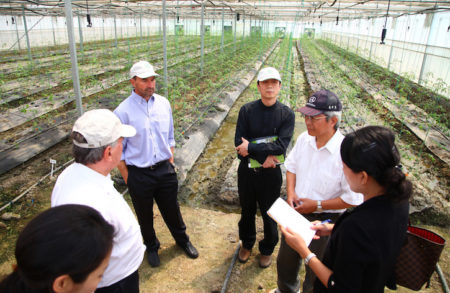
Thirty years ago, Hal Harvey began designing and building solar homes, and realized it wasn’t that difficult. Ever since, he’s been a champion for low-carbon solutions, and a rare optimistic voice about our ability to tackle climate change. Harvey, a Paulson Institute Senior Fellow, Paulson Prize Juror, and CEO of Energy Innovation, recently received the prestigious Heinz Award in the Environment category for strategic leadership in energy policy and his solutions to dramatically reduce carbon emissions and energy waste worldwide. Harvey, who has a long history working in both the US and China, feels that the two countries have an unwritten pact and historic opportunity to work together and lead on environmental issues. We asked Harvey where he gets his optimism, what the United States and China can learn from each other when it comes to reducing energy use and emissions, and what he’s learned from being a juror for the Paulson Prize since 2013.
What makes you optimistic about our ability to bring down carbon emissions and overcome the challenges of climate change?

In every sector, either low-carbon or zero-carbon opportunities are now being proven, and in every sector they are cost-effective, and in every sector the technological progress is continuing. Today by far the cheapest source of new electricity is solar or wind, and there are a few jurisdictions that have effected a transformation from high to low carbon at a very high speed. Both California and New York will have grids that are between 65 percent and 70 percent decarbonized by 2030. That’s only 14 years away, and those are two of our three biggest states in terms of energy use.
China has a bigger base of highly polluting industries and utilities than any country in the world, but it also has faster adoption of clean technologies than any country in the world. It’s a high-speed, high-stakes race. The Chinese government is committed to building renewable energy capacity equal to that of the entire U.S. power system in the next 15 years.
I would say China is now at an inflection point. It’s been such a pioneer and made such a dedicated political commitment to clean energy that it’s driven the price down to where it is no longer an economic penalty to go green. But there are business interests and state interests in running old equipment, such as coal power plants. The political choices in recent years have been excellent, but they have to be pursued with even more intensity.
What is one thing the United States and China are each doing right, and could stand to learn from each other?
China has been a pioneer in many respects, but let me mention two important ones. First, China has in some sectors of the economy been driven about shutting down obsolete factories. They are willing to take a look at the dirtiest slice of different industries, for example auto and cement, and just turn them off: The US has to learn to do that. We should be getting rid of the dirtiest 5% of factories and power plants every year, to make way for the new. Second, China has created steadily growing, large-scale demand for cleantech, and that’s what has driven the price of clean energy down. U.S. clean energy policy has been much more start-and-stop.
The U.S., on the other hand, has better building quality, building code compliance, and building energy efficiency. A lot of Chinese buildings are leaky and energy inefficient—and they don’t last very long. You waste an enormous amount of energy building a building and only keeping it up for 20-30 years. There is energy embedded in the cement, steel, aluminum, glass, and so forth. We should think of buildings as a 100, or better, a 300 year, asset, making them zero net energy, and putting in the kind of quality construction to allow that to happen.
Another thing the U.S. has done a very good job of, which China is beginning to do, is build a really serious environmental enforcement system. The Chinese Ministry of the Environment (MEP) is under inspired leadership, but it’s far too small to handle all the science, permitting, monitoring, and enforcement that China requires.
You’ve been on the jury for the Paulson Prize for Sustainable Cities since it first started three years ago. What have you learned along the way?
A lot about the prize process has been interesting to me. Chinese political leaders, especially provincial leaders like mayors and governors and so forth, are very interested in being seen as on the forefront of cleaning up the environment. There is a political desire to be seen as a leader in environmental protection, and they see the Paulson Prize as an important method for doing just that.
One of my motivations for getting involved with the Prize was to begin to more definitively separate what I would call green paint from green reality. As we scour the applicants, it’s been interesting to see that increasingly they are actually calculating their environmental impact and benefit. I think in the early days of environmental progress in China, there was more symbolic rather than substantive change. That is changing: the ideas we now see are deepening, becoming more substantive, and more comprehensive – which is all great.


